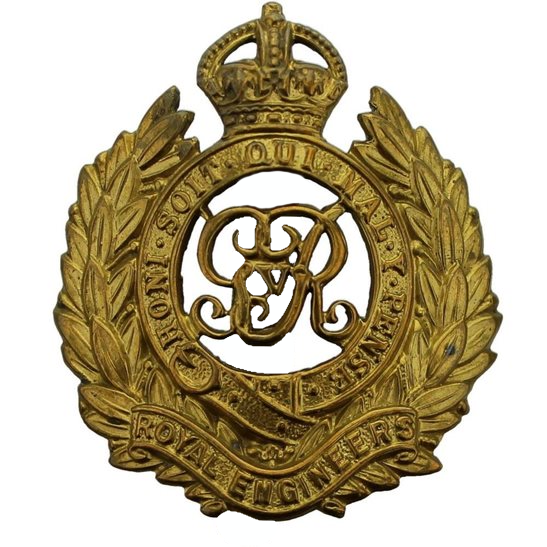Personal Details
Born: 19 February 1877 and baptised at All Saints Parish Church, Clive, Shropshire on 1 April 1877.
Family: He was the eldest of eight children born to John Groome and his wife Elizabeth, nee Lawley. He married Maria Shingley on 4 May 1908 at Brymbo Parish Church, Brymbo, Denbighshire. The couple had five children, Muriel, Alfred, William, Georgina and Mary.
Residence: From his birth in 1877 until 1891 Samuel was living in Clive, Shropshire. By 1911 his address was 31 Grindley Brook, Whitchurch, Shropshire. This was the address given for him on the 1919 Autumn Absent Voters List for Whitchurch. Samuel emigrated to Canada with his family in 1926 and lived in Saskatchewan, Canada for the remainder of his life.
Employment: On the 1891 Census his occupation was described as an agricultural labourer but 20 years later he was a blacksmith.
Died: 11 August 1964 in Kelliher, Saskatchewan, Canada, aged 87.
Military Details
Regiment: Royal Engineers
Rank: Sapper
Service Number: 387021 (previously 7021)
Date of Enlistment: Not known
Date of Discharge: 25 February 1919
Reason for Discharge: Not known
Samuel was awarded the Campaign Medals (British War Medal and Victory Medal).

The British War Medal (also known as 'Squeak') was a silver or bronze medal awarded to officers and men of the British and Imperial Forces who either entered a theatre of war or entered service overseas between 5th August 1914 and 11th November 1918 inclusive. This was later extended to services in Russia, Siberia and some other areas in 1919 and 1920. Approximately 6.5 million British War Medals were issued. Approximately 6.4 million of these were the silver versions of this medal. Around 110,000 of a bronze version were issued mainly to Chinese, Maltese and Indian Labour Corps. The front (obv or obverse) of the medal depicts the head of George V. The recipient's service number, rank, name and unit was impressed on the rim.
The Allied Victory Medal (also known as 'Wilfred') was issued by each of the allies. It was decided that each of the allies should each issue their own bronze victory medal with a similar design, similar equivalent wording and identical ribbon. The British medal was designed by W. McMillan. The front depicts a winged classical figure representing victory. Approximately 5.7 million victory medals were issued. Interestingly, eligibility for this medal was more restrictive and not everyone who received the British War Medal ('Squeak') also received the Victory Medal ('Wilfred'). However, in general, all recipients of 'Wilfred' also received 'Squeak' and all recipients of The 1914 Star or The 1914/1915 Star (also known as 'Pip') also received both 'Squeak' and 'Wilfred'. The recipient's service number, rank, name and unit was impressed on the rim.

